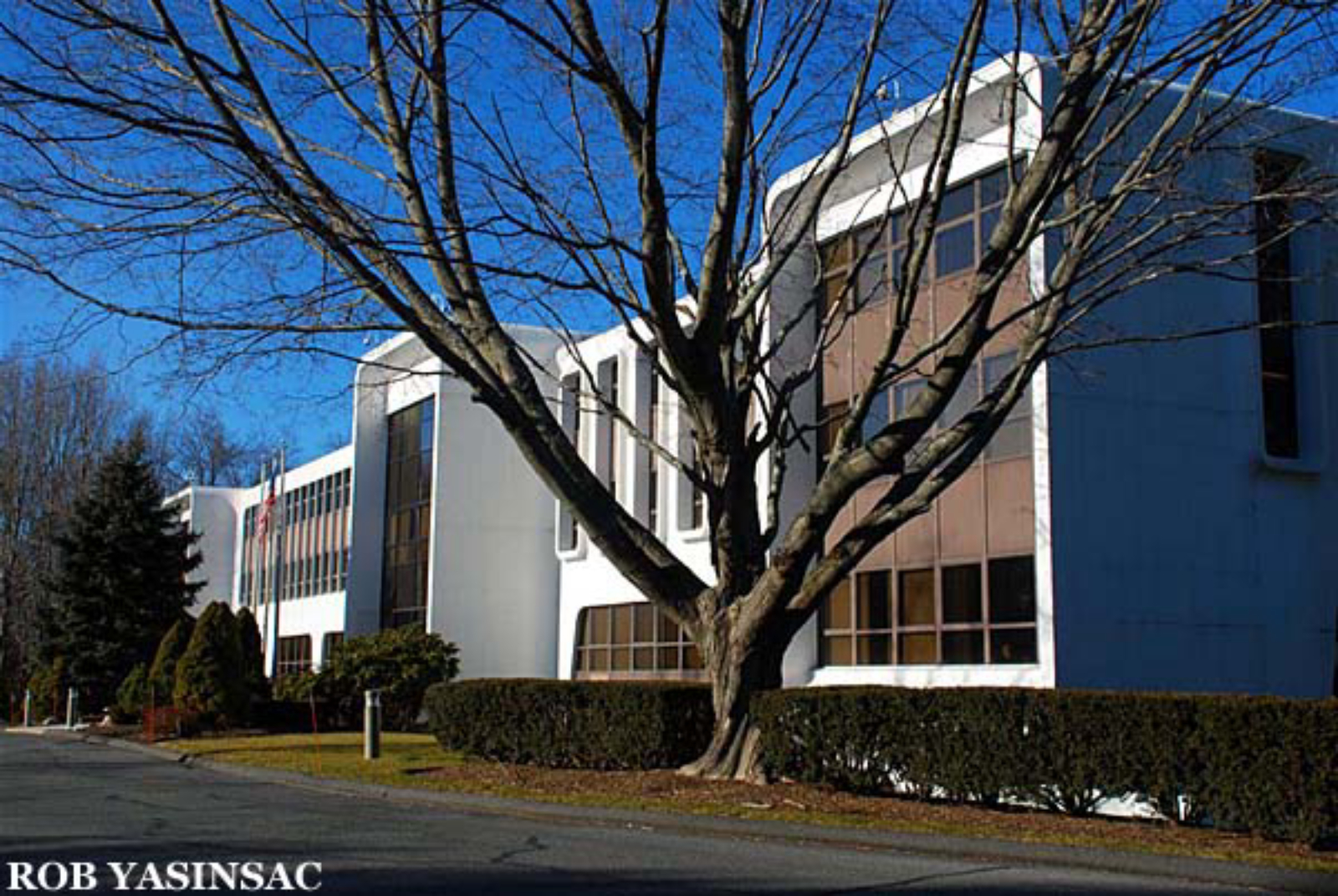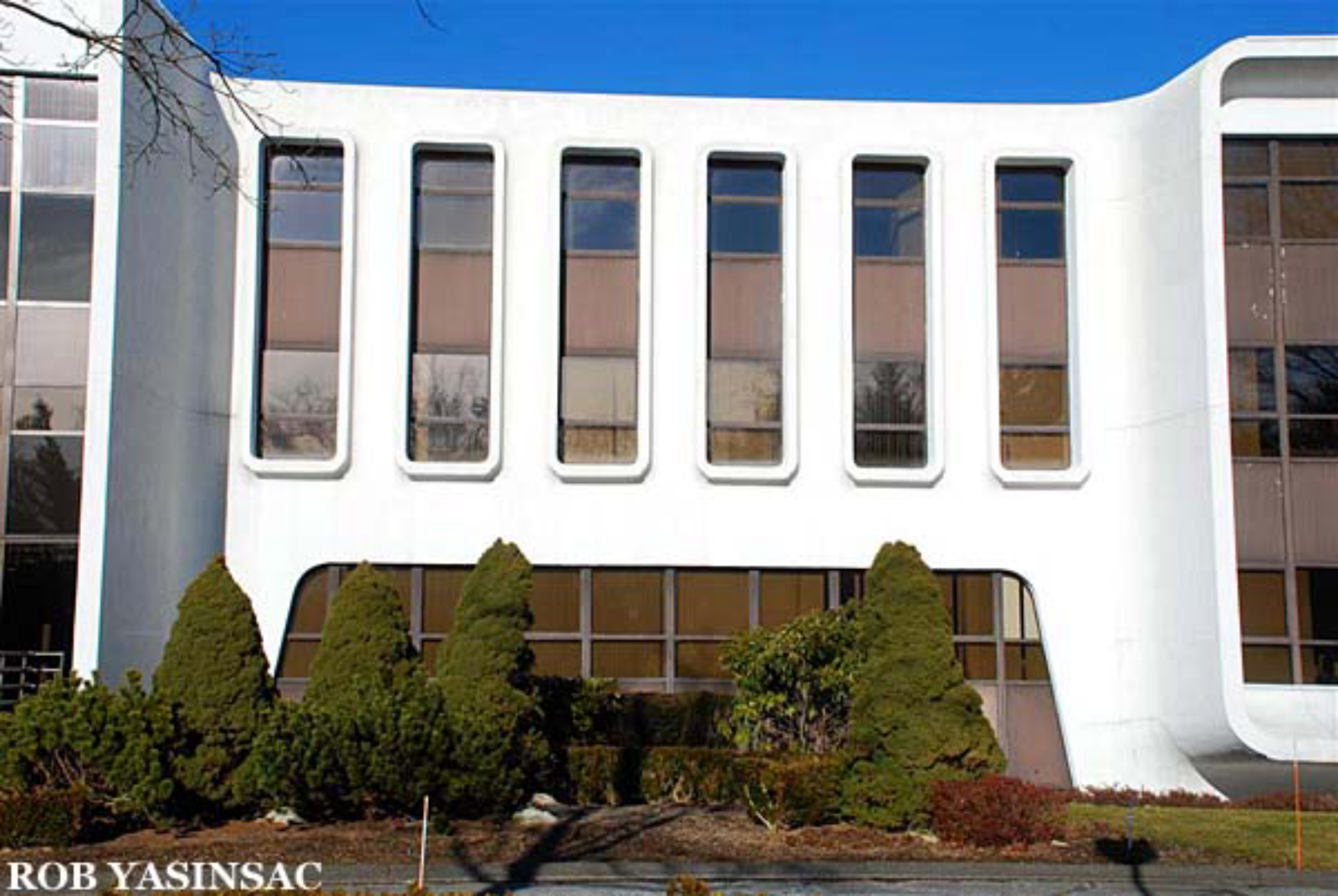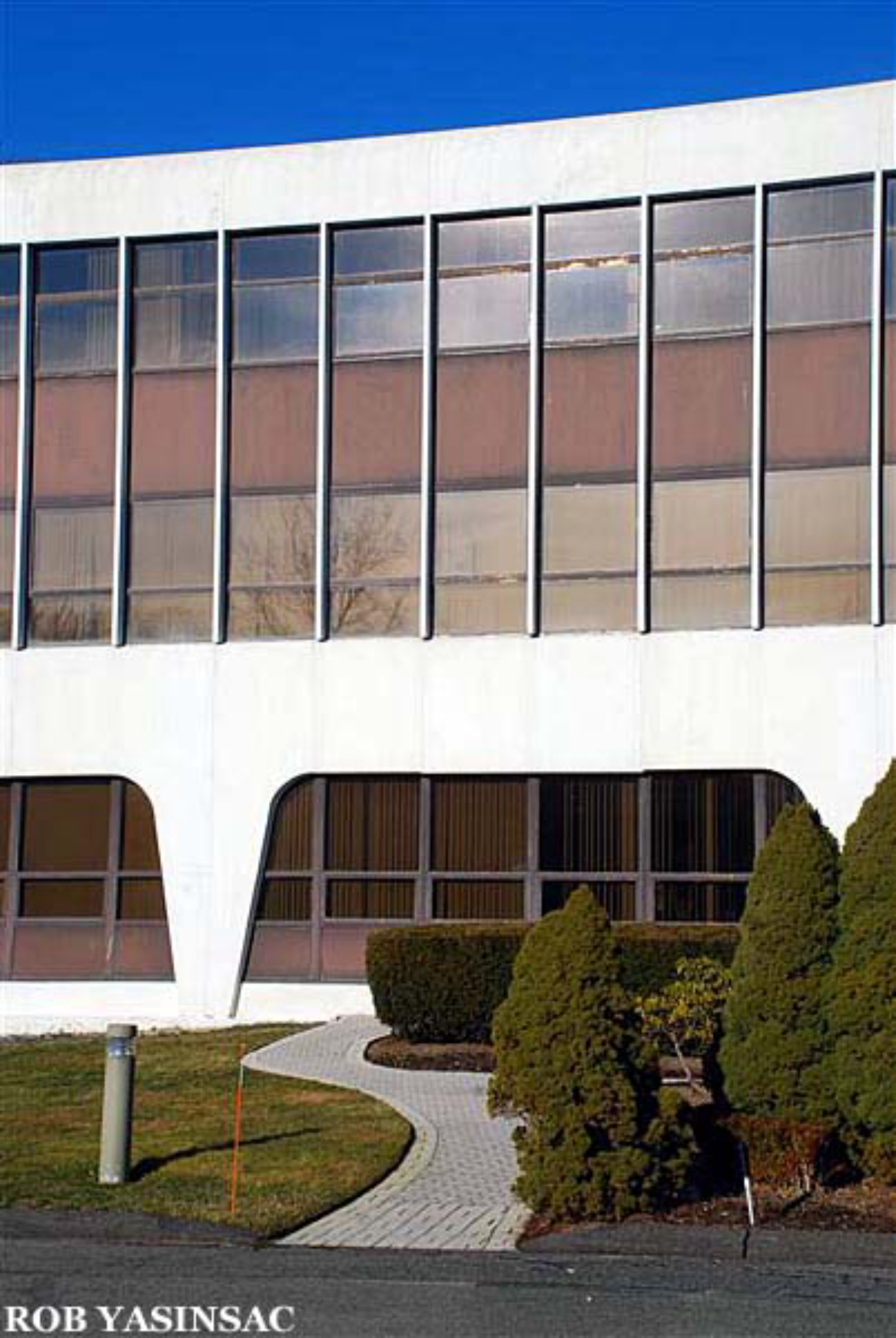Designed by internationally renowned architect Victor Hanna Bisharat, the High Ridge Park Corporate Center Campus was constructed from 1967-1975 and is potentially the largest, most intact example of its kind in Connecticut. The campus exhibits innovative engineering and experimentation in the plastic qualities of concrete to achieve new, sculptural building forms. The architectural significance of the High Ridge Park Corporate Center Campus is heightened through the individual, rather than uniform designs of each of the six buildings, which are unified through color and an overarching landscape plan.
The property is also notable for its association with the urban renewal-era relocation of corporate offices from New York City to Connecticut and the development firm of F. D. Rich, which was influential in attracting accomplished designers to Stamford. While other examples of Bisharat’s work exist in the United States and internationally, Stamford has a well-known concentration of his buildings, produced at the height of his career. Text from Connecticut State Historic Preservation Office Letter of support








